- 50+ փորձագետներ աշխատում են ձեզ օգնելու համար
- 17+ Շրջաններ որի բժշկական համակարգերը ծանոթ ենք
- 2000+ հարցեր արդեն լուծված են
Ինչպես է այն գործում
Sympomato- ն հավաքում է բարձրակարգ եւ փորձառու մասնագետների թիմ, որոնք անհատականացված, ապացույցների վրա հիմնված լուծումներ են տրամադրում ձեր կարիքներին համապատասխան:Այն ամենը, ինչ դուք լսել եք մեզանից, հիմնավորված է վերջին բժշկական ստանդարտների եւ ուղեցույցների մեջ:
-
Ասացեք մեզ, թե ինչն է սխալ
Ներկայացրեք ձեր հարցը `օգտագործելով ձեւը մեր կայքում:Անհրաժեշտության դեպքում կցեք փաստաթղթեր կամ լուսանկարներ:Եվ խնդրում եմ, մի անհանգստացեք. Մենք չենք պահում ձեր անձնական տվյալները: Այստեղ Դուք կարող եք կարդալ, թե ինչպես ձևակերպել այն, որպեսզի առավելագույն օգուտ քաղեք Սիմպտոմատոյի ծառայությունից:
-
Մենք որոշ ժամանակ կպահանջենք
Մենք ուշադիր ենք համարում ձեր վիճակի նրբությունները եւ վերլուծում եք ձեր տրամադրած բոլոր տեղեկությունները:Ընտրված ժամկետում մենք պատրաստելու ենք մանրամասն պատասխան:
-
Ստուգեք ձեր էլ. Փոստը:
Դուք կստանաք պատասխան ախտանիշից անմիջապես ձեր մուտքի արկղում:Մենք կարող ենք խորհուրդ տալ հատուկ բժիշկ եւ խորհուրդ տալ ձեզ, թե ինչ քայլեր է ձեռնարկել անձի նշանակումը:
Հարցերի և պատասխանների օրինակներ

Պլատֆորմը համախմբում է մեր կոլեկտիվ փորձը և գիտելիքը, առաջարկելով ձեր իրավիճակին համապատասխան պարզ և կոնկրետ լուծումներ:

I’m looking for some advice on my condition. Back in June 2023, I twisted my right ankle inward when I stepped on a stone. I felt pain on the outside of my foot, just below the ankle. At first, the pain wasn’t too bad, so I kept walking, but it got worse over time. I initially tried using Dolobene and Diclofenac ointments, and took NSAIDs for about five days, but had stomach flare-ups and stopped taking them. The pain didn’t subside with walking.
I also experienced pain when getting out of bed in the morning or after sitting for a long time—the first 5-10 steps were sharp and painful, but it would subside after that.
In September 2023, about 2.5 months after the injury, I saw an orthopedist and got an MRI. The results showed a partial tear of the tibio-navicular ligament and osteochondritis dissecans in the talus (see first report).
I started a 2-month course of cartilage protectors (chondroitin sulfate, glucosamine, collagen, and calcium). During this time, I reduced my activity, stayed home in November and December, only using my car to travel and walking with a cane for 500-1000 steps.
In October 2023 and January 2024, I went through two 20-session rounds of physiotherapy (magnet therapy, laser, ultrasound, electrostimulation, massage, ice therapy, and therapeutic physical exercises). I saw some improvement after these sessions. In February, after the second round of physiotherapy, the orthopedist said the ligament was healing well and recommended wearing an orthosis (a rubber "sock") if I walked more than 3000 steps. However, when I tried walking more than 3000 steps, the pain returned moderately. Periods of improvement alternated with periods of worsening pain, and the cause was unclear. On average, I walked 1500-2000 steps a day.
In April 2024, I started feeling more muscle tension and dull pain, spreading from my foot (around the Achilles tendon) up the back of my right leg to the hip, along with foot tremors. I started taking vitamin D. After another MRI on May 9 and seeing a neurologist, my electromyography was normal, but there was some response on the right side, likely from inflammation in the ankle. I began taking magnesium B6 and magnesium citrate. By May-June, I was walking around 2000 steps daily with some improvement.
In August, I tried swimming, but after entering and exiting the sea, and going up and down a steep slope (about 10 meters), the pain returned sharply, just like it did in the beginning of the injury, around the arch and outer ankle. I returned to a home-based routine for a month. After that, the pain fluctuated, and during the periods of improvement, I could walk 2000 steps, but when it got worse, I stayed home.
I continued foot exercises with therapeutic physical exercises (LFC), but after a flare-up in late October, I stopped. On October 26, 2024, I had a fourth MRI during a worsening phase. In November-December, I took Tendonix (400 mg twice daily), methylsulfonylmethane/collagen (1200 mg), vitamin C (200 mg), and magnesium citrate (400 mg). There was some improvement, and I could walk 3000-4500 steps, with no sharp pain in the morning.
By January 2025, I was off medication, but after walking a little, I felt buzzing in my leg and the pain returned with further walking, mainly localized below the outer ankle and the arch of my right foot, sometimes extending to the Achilles tendon. The pain was hardly noticeable when resting or sleeping. Occasionally, I felt slight numbness in the right foot. The tension along the back of my leg is still there, so I started taking magnesium again.
I’m now finishing my third round of physiotherapy (15 sessions of ultrasound, electrostimulation with ice, hydro-massage, and magnetic therapy every 3 days). After starting therapy, the pain worsened. When driving (an hour to the clinic and an hour back), the pain intensifies.
The physiotherapist recommended injections in the joint: Exoblast, Sanakin, and Peptis (see the attached descriptions). I haven’t had these injections yet, as I wanted to get a second opinion on their effectiveness and safety.
I’ve consulted four different trauma specialists in *****, but the treatments they suggested haven’t worked.
Hello!
Here’s an explanation of the findings from your MRI report:
Osteochondral damage to the medial talus block in the early stages: This suggests the presence of early degenerative changes in the joint, although there is no significant destruction yet.
Minimal tendosynovitis of the peroneal tendons: This indicates a mild inflammation of the tendons of the short peroneal muscles.
Paratenonitis of the Achilles tendon: This refers to inflammation of the tissue surrounding the Achilles tendon.
Moderate muscle edema (in the gastrocnemius, long flexor, and extensor of the big toe, and the abductor of the big toe): This could be a result of overuse or strain.
Increased fluid in the ankle and subtalar joints: This indicates the ongoing inflammation within these joints.
Partial, chronic damage to the tibio-navicular ligament: This is likely a residual effect from the initial injury.
In summary:
Your symptoms are likely due to residual effects from the injury, including ligament damage, inflammation in the tendons and joints, and resulting periodic flare-ups.
Tendinopathy and muscle overload could be attributed to improper load distribution or compensatory mechanisms during walking.
The main issue appears to be the osteochondral damage to the talus, which is likely hindering your recovery process.
Regarding the injections your physiotherapist recommended:
Exoblast: This is an injection composed of exosomes and growth factors aimed at promoting tissue regeneration and reducing inflammation. It may be useful for treating degenerative processes and cartilage damage.
Sanakin: An autologous therapy based on anti-inflammatory cytokines, commonly used for conditions such as osteoarthritis, tendinopathy, and chronic inflammation.
Peptis: These are collagen or peptide injections designed to support the healing of connective tissue, potentially aiding recovery of ligaments and tendons.
These injections may help reduce inflammation and support regeneration of damaged tissues, particularly for tendinopathy and cartilage degeneration. However, the effectiveness of these treatments will depend on how your body responds. Peptis, if it involves collagen therapy, could assist in maintaining ligaments and tendons, but there is limited evidence supporting its efficacy in the treatment of osteochondral damage.
It is important to note that none of these treatments are guaranteed to restore cartilage or fully resolve your condition. While they may provide temporary relief or support regeneration, significant clinical improvement is not always assured.
I would recommend consulting with an orthopedist to determine if the injections are necessary or if continuing conservative treatment would be more appropriate. This consultation can be done remotely, and I would advise reaching out to ********* for a further evaluation. You will need to provide the MRI images for this consultation, so I recommend uploading them to a file-sharing platform beforehand.
Continue with your rehabilitation, but proceed with caution. Physiotherapy can sometimes exacerbate inflammation temporarily, which may lead to minor flare-ups after treatment.
Carefully monitor your physical activity and consider wearing the orthosis even for shorter walks, not just when walking over 3000 steps.
I suggest a follow-up MRI after 3–6 months to assess the progression of the osteochondral damage. Monitoring the changes in the joint will be important.
In addition, a CT scan or ultrasound may provide more detailed insights into the cartilage and bone damage.
You may also want to explore the use of orthopedic insoles or specific exercises aimed at reducing strain on the affected structures. These interventions can be arranged at the ******** clinic, and custom insoles can be ordered through ********.
To summarize:
Your condition remains unstable, but there has not been significant worsening.
Injections may provide some benefit, but there is no guarantee of success.
It may be worth considering alternative treatments, such as PRP (platelet-rich plasma) therapy, which has shown more consistent results for similar conditions. If your treating physician agrees, this could be an option worth exploring.
I need a consultation with an endocrinologist regarding the condition of the parathyroid gland and further actions and diagnostics.
Symptoms: elevated levels of parathyroid hormone and calcium (in blood and urine).
An ultrasound did not reveal any visible changes.
The doctor I consulted with recommended a CT scan with contrast for potential surgical intervention.
Questions:
How important are these indicators for life – what do they affect, and do they have any effect at all? Or can I continue living with this?
Which test is better for the thyroid and parathyroid glands – MRI or CT?
Is there a possibility for conservative treatment in such cases?
Where and to whom should I seek help?
Hello!
It is very important to understand how elevated the levels of parathyroid hormone and calcium are. A diagnosis of hyperparathyroidism is not made based on a single elevated indicator, as parathyroid hormone can increase not only due to diseases of the parathyroid glands but also, for example, due to kidney problems or vitamin D3 deficiency. It is essential to gather a full medical history (symptoms, family history, age at menopause, fractures, kidney stones, chronic diseases, etc.).
When parathyroid hormone is elevated (at least in two tests), it is necessary to exclude disorders of phosphate-calcium metabolism. The following tests are recommended: 24-hour urine for calcium and phosphorus, blood test for calcium adjusted for albumin, kidney function tests (creatinine, urea), alkaline phosphatase, and vitamin D3 levels. It is also advisable to conduct an osteodensitometry of the lumbar area and the femoral head (at least one).
If the diagnosis of primary hyperparathyroidism is confirmed, imaging of the lesion should be performed. The first stage usually involves a parathyroid scintigraphy or SPECT (Single Photon Emission Computed Tomography). MRI and contrast-enhanced CT are used less often, as the second stage of diagnostics. Unlike CT, the first method uses radionuclides, which help not only to identify the focus in the parathyroid gland but also to detect its ectopic location. If scintigraphy or SPECT is unavailable, a contrast-enhanced CT, particularly 4D CT, is preferred as it provides a clearer image of the anatomy and helps detect adenomas. MRI can be helpful if there are contraindications for contrast-enhanced CT.
How does parathyroid hormone affect the body? Increased levels can lead to bone destruction, fractures, and kidney stones. High blood calcium levels can cause muscle weakness and weight loss, and critical calcium elevation can provoke issues with the central nervous system. You can live with this condition, but without treatment, the quality of life gradually worsens, and serious complications may arise.
Treatment for confirmed hyperparathyroidism depends on many factors. If a lesion is found, surgery is most often indicated. If no lesion is detected and parathyroid hormone and calcium levels are not too high, vitamin D3 in therapeutic doses is prescribed, and monitoring continues. Kidney diseases, if present, are treated, and parathyroid hormone levels are monitored dynamically. Every case is unique, and it is difficult to predict exactly how your condition will develop. We recommend consulting with Dr. ***********.
Additionally, we can help find a Russian-speaking consultant online, but this would be advisable only after the necessary tests have been conducted. Without them, it is difficult to provide detailed and useful advice.
Good afternoon,
For more than 10 years, I have been experiencing a mild aching pain (1/10) in my right knee. I first noticed the pain while riding a motorcycle in gear with tight knee protection, which seemed to compress the knee. I also often sit cross-legged or with my legs bent.
In the last couple of years, the pain has become more noticeable and occurs more frequently. When I sit on the floor, I am unable to stand up while putting weight on this leg. The pain has also started appearing after long walks.
For the past few weeks, the aching has worsened, especially after prolonged standing, now reaching a pain level of 5/10.
More than 10 years ago, I had an MRI in Russia, but I no longer have access to the results. I vaguely remember that the diagnosis was something along the lines of cartilage tissue thinning or abrasion.
Currently, I live in the *** without insurance and would like to receive a recommendation on what type of MRI I should get—whether with or without a contrast agent. Additionally, if possible, I would like assistance in interpreting the MRI results and receiving a treatment plan based on the findings.
Thank you in advance
Dear Viktoria!
Your symptoms suggest a chronic knee issue—most likely related to cartilage wear (such as patellar chondromalacia or osteoarthritis), meniscal degeneration, or patellofemoral pain syndrome. The increasing pain, difficulty bearing weight, and your previous MRI findings all point in this direction.
1. MRI of the Knee: Non-Contrast vs. Contrast
For suspected cartilage damage, a non-contrast MRI is typically sufficient. This examination will allow us to assess:
• Cartilage: Look for thinning, softening, or outright damage.
• Menisci: Identify any tears or degenerative changes.
• Bony Structures: Detect stress injuries or early signs of arthritis.
• Ligaments and Tendons: Evaluate for any injuries or strains.
A contrast-enhanced MRI (using gadolinium) might only be required if there is a suspicion of inflammatory arthritis (for example, rheumatoid arthritis), if there’s a need to evaluate the vascular supply to the cartilage (a very unlikely scenario), or if previous imaging has been inconclusive.
Given that your condition is most likely due to a mechanical injury of the cartilage, a non-contrast MRI is the best initial step.
2. Where to Obtain an Affordable MRI in the ****
Since you do not have insurance, you might consider the following options:
• Private Diagnostic Centres: These are often more cost-effective than hospital imaging departments.
• Cash Payment Discounts: Some centres offer reduced rates for cash payments, with MRI costs ranging from approximately $300 to $600.
• Online Services: Providers such as Radiology Assist or Green Imaging offer discounted prices on MRI scans.
3. Assistance with Interpreting Your MRI Results
Once you receive your MRI results, you can upload the images to any file-sharing service and contact Dr**********. He can advise you on the appropriate next steps for your situation.
Treatment may involve conservative measures—possibly including intra-articular injections—or, if the damage is significant, surgical intervention. In most cases, this would involve minimally invasive arthroscopy to remove the damaged portion of the meniscus or smooth the cartilage, although more complex procedures to restore joint alignment might be necessary in some instances.
Can you help me figure out how to find the right specialist/service to discuss my options? The issue isn’t urgent or critical, and honestly, it seems minor. But there’s some discomfort, and I’d like to get a consultation. Online would be ideal. I’m based in ******, and my language skills are decent but not perfect, so I’m leaning toward online consultations with no geographic restrictions at first.
About a year and a half ago, I started feeling discomfort on both feet, specifically under the pads of the toes (between the 2nd and 3rd). There's no pain at all, and I can't feel anything physically. But there's a strange internal sensation in that area, kind of like something is "extra" there. It's hard to explain – not exactly a bump, but similar. I mostly notice it when I’m walking, which makes sense. Again, just to emphasize – no pain (so I know it’s definitely not urgent), but it’s uncomfortable.
Lately, I’ve been massaging these areas regularly with a special ball, but nothing has changed. I’m physically active – I go to the gym three times a week (been doing it for about 40 years).
I’d like to know if this is just something related to getting older that I need to accept or if it’s a medical issue I can do something about.
Apologies if my question seems trivial or out of place for something urgent.
Your question is totally valid, and the discomfort you’re feeling is definitely worth paying attention to.
Even though there’s no pain, that sensation under your toes could be due to a few different things:
Morton’s neuroma – thickening of the nerve between the bones in the foot, often between the 2nd and 3rd toes.
Metatarsalgia – overload of the bones in the ball of the foot, which can be common in active people.
Age-related changes in the foot – thinning of the fat cushion under the bones in the foot, which can cause discomfort.
Flat feet or foot deformities – these can affect how pressure is distributed across your foot.
Footwear issues – especially if your shoes have hard soles or don’t distribute pressure properly.
Unfortunately, an online consultation might not be the best choice here. To get a proper diagnosis, it’s important to have someone examine your foot in person and possibly do some additional tests, like an ultrasound or X-ray, to rule out a neuroma.
I’d suggest starting with a consultation with a podiatrist (a foot specialist). They’ll examine your feet, look at your walking pattern, and recommend things like orthotics or exercises. If the discomfort doesn’t go away, they might suggest getting an ultrasound, and an orthopedic specialist can help with that.
Since you’re in ****** and prefer an English- or Russian-speaking service, here are a few options:
Terveystalo – a large healthcare provider that offers online consultations as well.
Doctena.eu – an international platform where you can find doctors, including podiatrists, orthopedic specialists, and physiotherapists, with online consultations.
DocOnline or Qare – international online services where you can find English-speaking specialists.
If you’re open to traveling, you might also want to consider visiting Latvia – there are a lot of Russian-speaking podiatrists and orthopedic specialists in Riga who could help with your issue. We can provide you with some recommendations if needed.
Things you can try on your own:
Keep massaging with the ball, but also add some foot-strengthening exercises, like calf raises or picking up small objects with your toes.
Check your shoes: you’ll want ones that have cushioning in the forefoot area and soft insoles.
Consider getting custom or ready-made orthopedic insoles, especially if you have flat feet or age-related changes in your feet.
Good afternoon! I need a consultation with a pediatric orthopedist or rheumatologist. Here’s the situation: my 5-year-old son suddenly started complaining about pain in his leg on January 25th, saying he couldn’t stand or walk. He pointed to his hip as the source of the pain. He could crawl and sit. This lasted for 2 days, January 25-26, and I had to carry him in a stroller or hold him at home. On January 27th, the pain was completely gone, and since then, he hasn’t complained about his leg. I kept him at home for 2 more days just in case, and then he went back to kindergarten. We only saw an orthopedist on January 31st (in ******, it’s not easy to get an urgent appointment), and they did an ultrasound. The ultrasound showed swelling in the hip joint, and the orthopedist diagnosed transient synovitis. He prescribed ibuprofen for 5 days, which we followed. We didn’t restrict movement too much; the child didn’t complain, and while we didn’t do any sports, he’s an active 5-year-old who runs and jumps around all the time. A week later, on February 7th, we went for a follow-up. Unfortunately, the ultrasound showed minimal changes. The measurement was 0.75 vs 0.58 before, and it changed to 0.71 vs 0.51 after the week. I’ve attached the image. The orthopedist said it should have been resolved by then and prescribed 2 weeks of complete rest in bed, followed by another check-up. The child is full of energy and has no complaints. I need a second opinion: is it really necessary to keep a 5-year-old in bed for 2 weeks if there are no complaints apart from the ultrasound findings? Could it be that the condition is improving slowly on its own? Is it worth continuing the ibuprofen?
I understand your concern.
Transient synovitis of the hip joint is a temporary inflammation of the synovial membrane, which is most commonly seen in children aged 3-8 years, often following or alongside a viral infection. It is the most common cause of sudden limping in children. In most cases, synovitis resolves on its own within 1-2 weeks.
Regarding the ultrasound: inflammation typically lasts longer on the ultrasound than it does in terms of clinical symptoms.
Is this progression normal?
Yes, it is. In most cases, transient synovitis does resolve within 1-2 weeks or even a few days, but in some children, the fluid may persist for up to 4-6 weeks, even if clinical symptoms have already disappeared.
Does he really need to be on strict bed rest?
Yes, one of the factors for faster recovery is resting the joint. However, bed rest for a 5-year-old child who isn’t complaining is probably harder on him than the condition itself. Typically, when there is no pain and the child is active, it's recommended to limit physical activity moderately (for example, avoiding jumping, long walks, and not riding a bike or skiing during this time). It’s best to keep the child engaged in calmer activities like quiet games or watching cartoons to reduce pressure on the joint.
The issue with this condition is that if the synovitis isn't fully treated, it may relapse with subsequent respiratory infections because the synovial membrane is still somewhat predisposed to reacting to infections. For this reason, treatment is continued until there’s clear improvement on the ultrasound. If the fluid hasn’t completely resolved, the risk of relapse during a viral infection increases.
Should ibuprofen or Nurofen continue?
Ibuprofen is traditionally used to treat transient synovitis of the hip joint. However, if there’s insufficient improvement, it might make sense to switch to medications with stronger anti-inflammatory effects, such as naproxen or meloxicam (Movalis).
Next steps:
Avoid excessive physical strain (no running, jumping, or bike riding).
Don’t completely restrict movement if the child isn’t complaining.
Re-evaluate in 2-3 weeks (you can repeat the ultrasound later if changes persist, but only if clinical symptoms don’t worsen).
Watch for new symptoms: if there’s any pain, fever, swelling, or movement restriction, a follow-up examination is necessary.
Conclusion: In your case, since your child feels fine, has no complaints, and is still full of energy, but the ultrasound shows a slow reduction in fluid, strict bed rest isn't mandatory. You can limit active play and sports, but there’s no need for full immobilization. A follow-up in 2 weeks is reasonable, but if your child remains active and symptom-free, strict bed rest isn’t required.
Про какие системы здравоохранения мы знаем
Պլատֆորմը համախմբում է մեր կոլեկտիվ փորձը և գիտելիքը, առաջարկելով ձեր իրավիճակին համապատասխան պարզ և կոնկրետ լուծումներ:
Ի՞նչ արժե դա:
Մենք աշխատում ենք երկու մոդելով։ Դուք կարող եք վճարել ընտրված ժամանակահատվածի համար և տալ մեզ անսահմանափակ թվով հարցեր, որոնք մենք կլուծենք աշխատանքային օրվա ընթացքում։ Կամ, կարող եք դիմել մեզ մեկանգամյա հիմունքներով․ այս մոդելը հարմար է շտապ կամ կանխարգելիչ հարցերի համար։
Հաճախ տրվող հարցերի պատասխաններ


Ինչպե՞ս հարց տալ:
Ինչպես տալ հարց՝ առավելագույն օգուտ քաղելու մեր ծառայությունից
-
Ապահովեք ձեր տարիքը եւ սեռը (Որոշ հարցերի պատասխանները կարող են տարբեր լինել `կախված այս տեղեկատվությունից):
Նաեւ ներառեք ձեր կոնտակտային տվյալները: -
Եթե ձեր հարցը ուրիշի մասին է(E.G., սիրելիի), փոխարենը խնդրում ենք տրամադրել դրանց մանրամասները:
-
Մանրամասն նկարագրեք ձեր խնդիրը:Կարող եք հարցեր տալ ձեր վիճակի, հիվանդության, բուժման կամ առողջապահական համակարգի կամ բժիշկների վերաբերյալ, որտեղ գտնվում եք ներկայումս գտնվում եք:
Խնդրում ենք տեղեկացնել մեզ:
- Ինչը ձեզ դրդեց օգնություն խնդրել:;
- Նկարագրեք ձեր վիճակը, ինչն է ձեզ անհանգստացնում:;
- Անհրաժեշտության դեպքում տրամադրեք ձեր խնդրի վերաբերյալ ֆոնային տեղեկատվություն (ինչպես եք հիվանդացել, թե ինչպես եք վերաբերվում, ինչ դեղեր եք վերցնում, թե որ բժիշկներն են:;
- Եթե ձեր հարցը առողջապահական համակարգի հետ շփվելու մասին է, նշեք այն քաղաքն ու երկիրը, որտեղ գտնվում եք:;
- Ինչպիսի օգնություն է ձեզ հարկավոր ախտանիշատոնի թիմից:Ինչ որոշում եք ցանկանում պատրաստել:.
-
Կարող եք կցել սկաներ կամ թեստի արդյունքները Ձեր հարցին `մասնագետին օգնելու համար ավելի ճշգրիտ գնահատել ձեր իրավիճակը:

Սիմպտոմատո թիմը
Անաստասիա Բելուս

Էնդոկրինոլոգ
12 տարի
Օստրովսկայա Իրինա

Նեֆրոլոգ
Յուլիա Կորժենկովա

մանկաբույժ, ինֆեկցիոնիստ
Նատալյա Կոլեսնիկովա

Թոքաբան, ռեանիմատոլոգ
Միխայիլ Գիլյարով

Սրտաբան
Եկատերինա Վյալովա
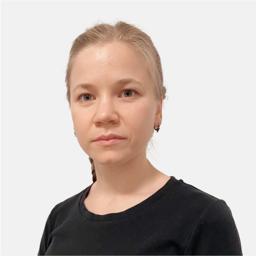
Վնասվածքաբան-օրթոպեդ
Ալեքսանդրա Բոցինա

Նյարդաբան
Միխայիլ Դոդոնով

Ուռուցքաբան
Նատալյա Բելովա
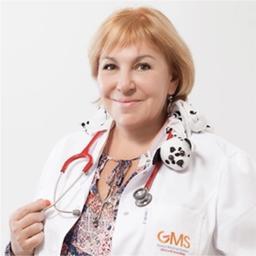
Մանկաբույժ, գենետիկ, էնդոկրինոլոգ
Օլգա Ստեփանեց

Ռևմատոլոգ
Թամարա Վիբորնայա

Ակնաբույժ
Մաքս Սերաձին

Օնկոլոգ
Ալեքսեյ Սվետ

Թերապևտ, սրտաբան
Աբդուլխամիդով Ալեքսանդր

Ուրոլոգ, անդրոլոգ
Դմիտրի Գարկավի
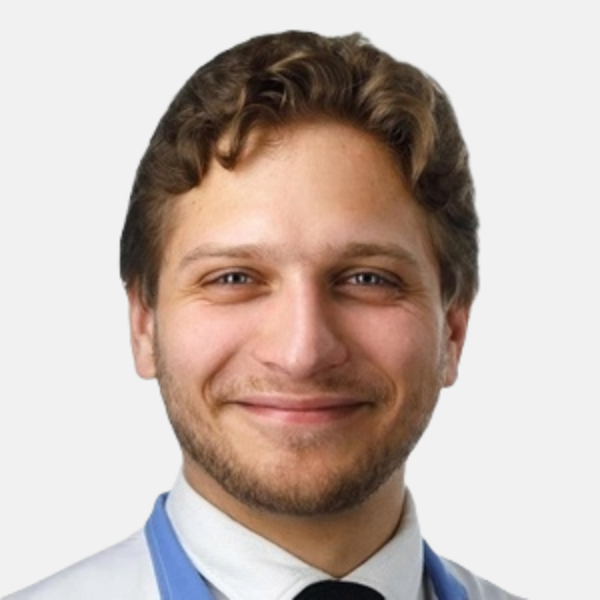
Վնասվածքաբան-օրթոպեդ / օրթոպեդ, վնասվածքաբան
Տիրապետում է PRP թերապիայի, ցավի ներարկման թերապիայի և մանուալ թերապիայի: Մասնագիտանում է հենաշարժական համակարգի հիվանդությունների բուժման, ախտորոշման և կանխարգելման գործում, այդ թվում՝ գլենահումերալ պերիարտրոզի, օստեոարթրոզի, կրունկի սրունքների, սկոլիոզի, հարթաթաթության, տորտիկոլիսի, սրածայր ոտքի և այլն։
Vidmante Dailidite
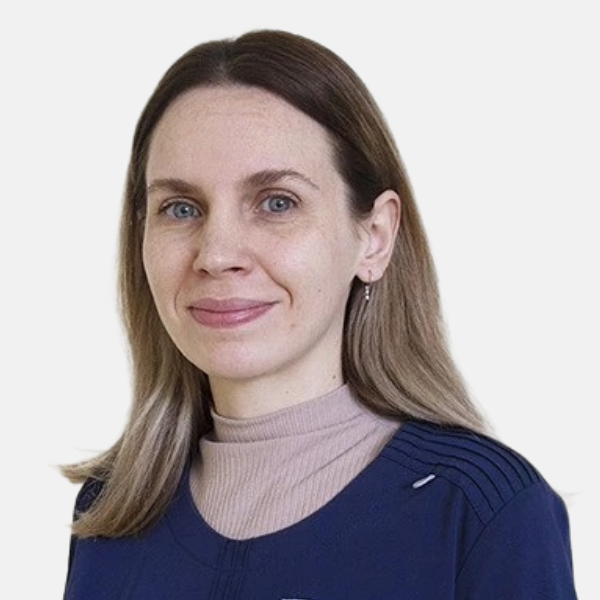
Արյունաբան, մանկական ուռուցքաբան, ուռուցքաբան
Ախտորոշում և բուժում է չարորակ ուռուցքների և արյան հիվանդությունների հետևյալ տեսակները. անեմիա; կոագուլոպաթիա; հեմոռագիկ վասկուլիտ (Henoch-Schönlein հիվանդություն); թրոմբոցիտոպենիկ purpura; ոչ Հոջկինի լիմֆոմա, Հոջկինի լիմֆոմա, մարգինալ գոտու լիմֆոմա; հեմոֆիլիա, հեմոգլոբինոպաթիա; թալասեմիա; մանգաղ բջջային անեմիա; բազմակի միելոմա; նեյտրոպենիա; ագրանուլոցիտոզ; պոլիկիտեմիա; միելոդիսպլաստիկ համախտանիշ; ապլաստիկ անեմիա; քրոնիկ միելոպրոլիֆերատիվ հիվանդություններ; Գլանցմանի թրոմբաստենիա. Երեխաների հետևյալ հիվանդությունները՝ մեդուլոբլաստոմա, գլիոբլաստոմա, Յուինգի սարկոմա, օստեոսարկոմա, հեպատոբլաստոմա, նեյրոբլաստոմա, սեռական բջիջների ուռուցքներ, ալվեոլային և սաղմնային սարկոմա, ռաբդոմիոսարկոմա, վահանաձև գեղձի քաղցկեղ:
Ելենա Դոլժնիկովա

Ռևմատոլոգ
Դմիտրի Կեսարև

Նյարդաբան, վերականգնողական մասնագետ
Ավարտել է առաջադեմ վերապատրաստման դասընթացներ էլեկտրաէնցեֆալոգրաֆիայի, նյարդաբանության և կլինիկական էլեկտրասրտագրության ոլորտներում:
Կոնստանտին Լոկշին

Ուրոլոգ, ուռուցքաբան, ուրոլոգ-անդրոլոգ, ուռուցքաբան
Ելենա Տաբարչուկ
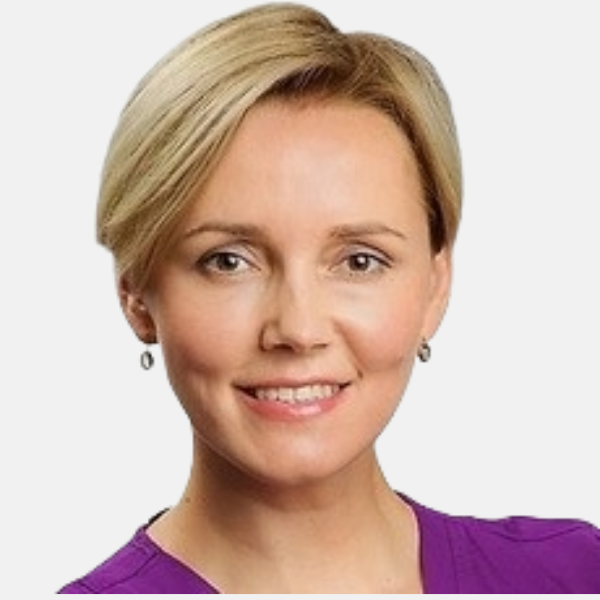
Ակնաբույժ
վիրուսային, բակտերիալ և ալերգիկ կոնյուկտիվիտ,
չոր աչքի համախտանիշ,
ստրաբիզմ,
կարճատեսություն, հեռատեսություն, աստիգմատիզմ,
գլաուկոմա և այլն:
Տիրապետում է OCT (օպտիկական կոհերենտային տոմոգրաֆիա) տեխնիկային:
Ելենա Ալեքսանդրովնան ընտրում է տարբեր աստիճանի բարդության ուղղիչ ակնոցներ և փափուկ կոնտակտային ոսպնյակներ: Ցանկացած տարիքի երեխաներին սովորեցնում է ճիշտ օգտագործել կոնտակտային ոսպնյակները:
Նա Ռուսաստանի ակնաբույժների միության (SOR), Եվրոպական գլաուկոմայի միության (EGS) և Աչքի և տեսողության հետազոտությունների եվրոպական ասոցիացիայի (EAVER) անդամ է:
Լրացուցիչ վերապատրաստում է անցել Ռուսաստանի անվան ազգային հետազոտական բժշկական համալսարանում` կոնտակտային տեսողության ուղղում և օպտոմետրիա դասընթացներով: Ն.Ի. Պիրոգով, աստիգմատիզմի շտկում, տեսողության օրգանի վնասվածքներ, մանկական ակնաբուժություն և նորածինների տեսողության խնամք։ Նա նաև սովորել է տեսողության ուղղում երեխաների համար Հյուսիսարևմտյան պետական բժշկական համալսարանում: Ի.Ի. Մեչնիկով. Մասնագիտացված է կարճատեսության, ստրաբիզմի և օպտոմետրիայի մեջ:
Անաստասիա Ուգրյումովա
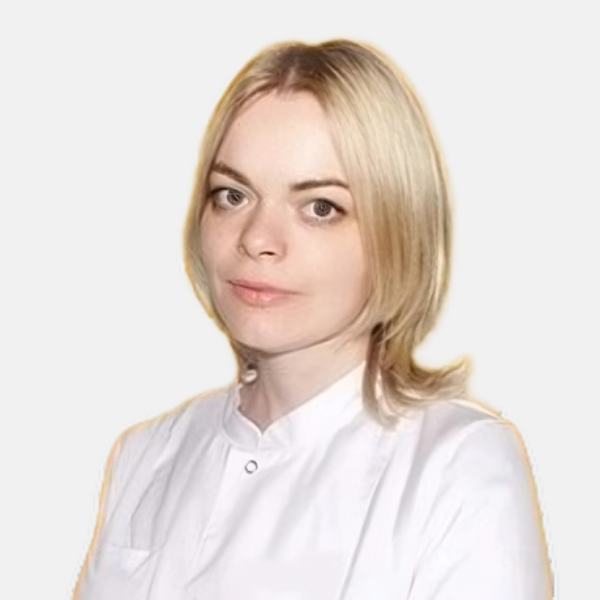
Մաշկաբան/կոսմետոլոգ, մաշկաբան
տիրապետում է ուռուցքների պահպանողական և վիրաբուժական հեռացման մեթոդներին: Ունի վերապատրաստման և պրակտիկայի փորձ Ֆրանսիայում և ԱՄՆ-ում։
Ախտանիշատոյի թիմի փորձագետները աշխարհի առնվազն մեկ երկրում բժիշկներ են, բայց ձեր տարածքում կարող են լիցենզավորված լինել.


Մեր նպատակն է
Մենք կամուրջում ենք բացը կամուրջը բժիշկների եւ հիվանդների միջեւ բացը, հզորացնելով ձեզ տեղեկացված բժշկական որոշումներ կայացնելու համար:Մենք ձգտում ենք լինել ձեր հուսալի աջակցությունը անորոշության եւ խառնաշփոթի ժամանակ:















